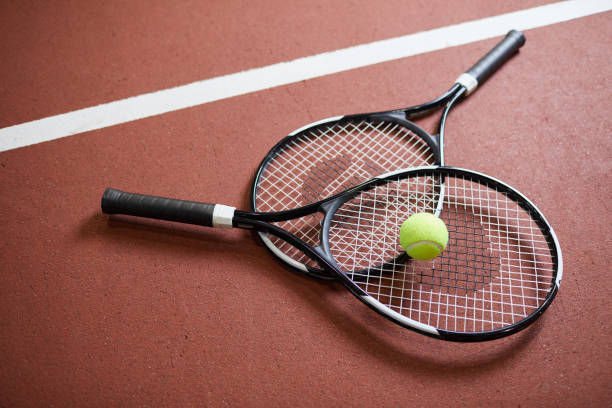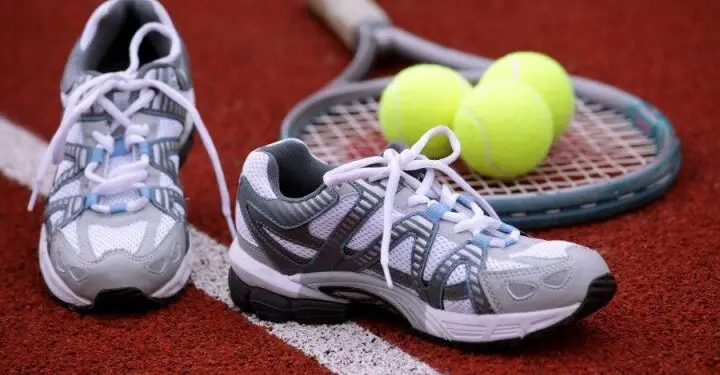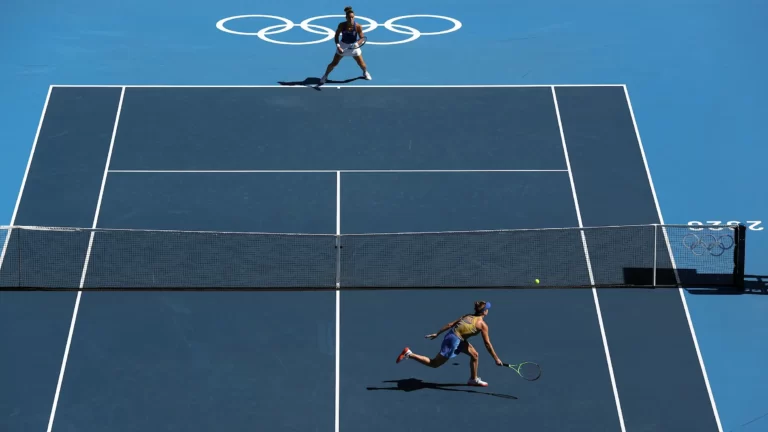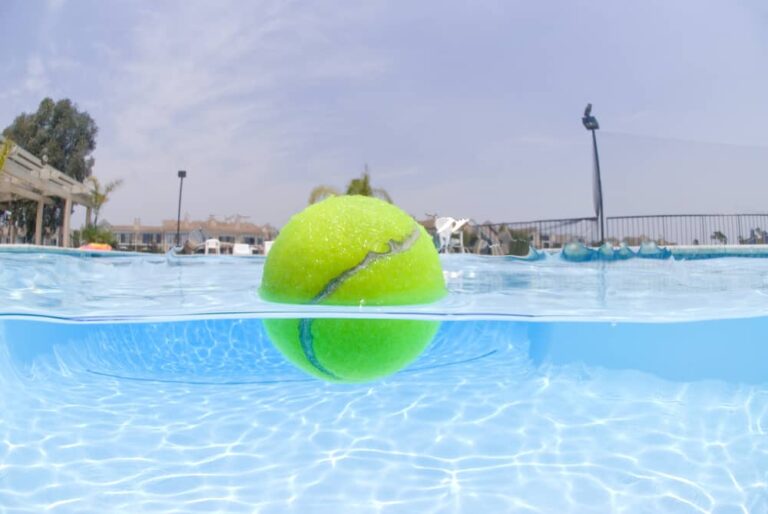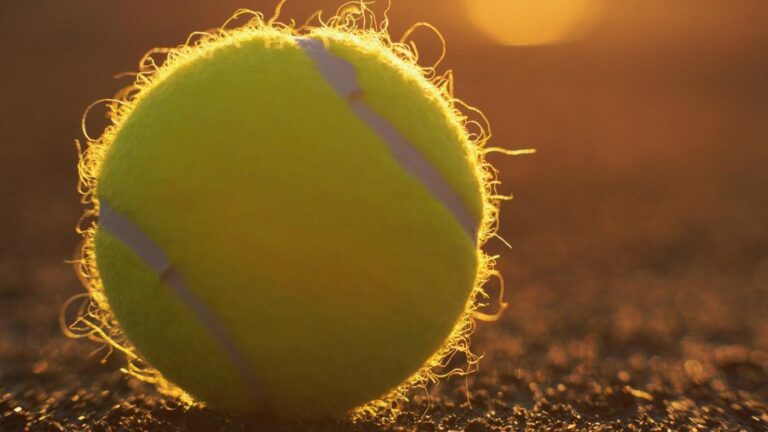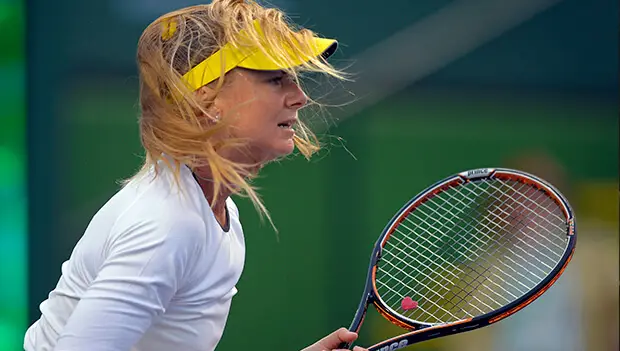Can You Play Tennis On A Wet Court?
Yes, you can still play tennis on a wet court if you have good enough footing. If someone else says the courts are okay to play on, that’s wonderful, but don’t take the chance if you feel uncomfortable. Any slip, especially when playing on wet courts, might result in a severe injury that could keep you out of action for several months.

Have you ever questioned whether playing tennis on a wet court is possible? So, guess what? Yes, you can! Even if it might seem challenging, you can play tennis on a wet court. Playing tennis on a wet court is not effectively the same as playing on a dry court.
We’ll cover everything about it in this article, from if it’s feasible to the issues you should be aware of. So let’s wear your waterproof footwear and prepare for a wet and enjoyable tennis game!
How To Avoid Injuries When Playing Tennis On A Wet Court?
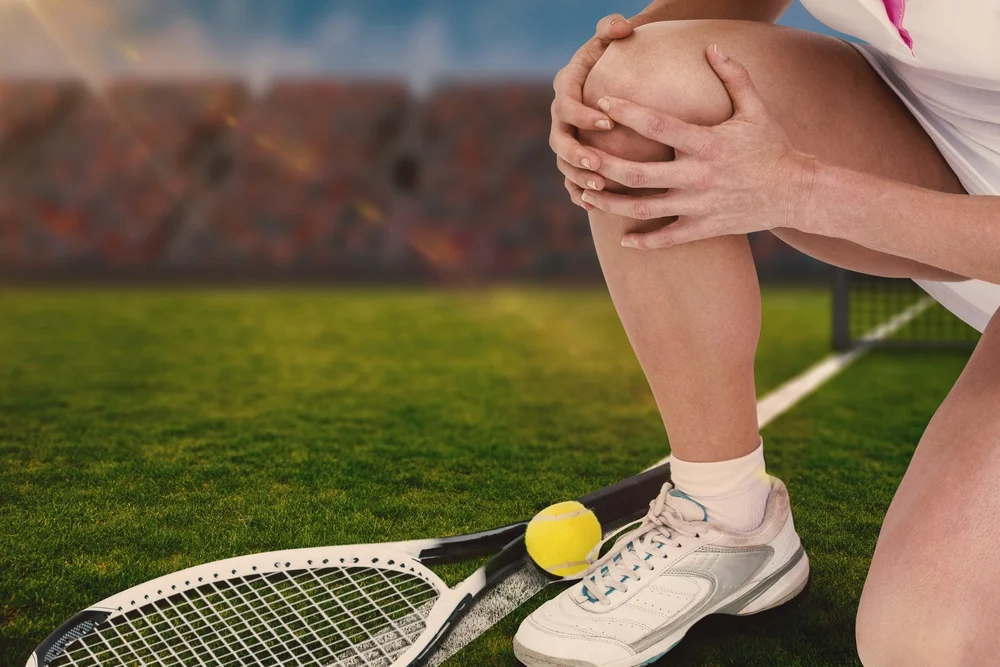
Your first concern should be to avoid injuries and be safe when playing tennis on the wet court. As you know, if the courts are too wet, then the courts can be unplayable and there will be an increased injury risk. Here are some pointers to help you manage the slick terrain and lower your chance of injury.
Slow it down
Rain can make the court slick, making losing your balance simpler. Consider moving slowly and with caution. Avoid abrupt direction changes or fast stops since they increase your risk of falling and becoming hurt.
Adjust your footwork
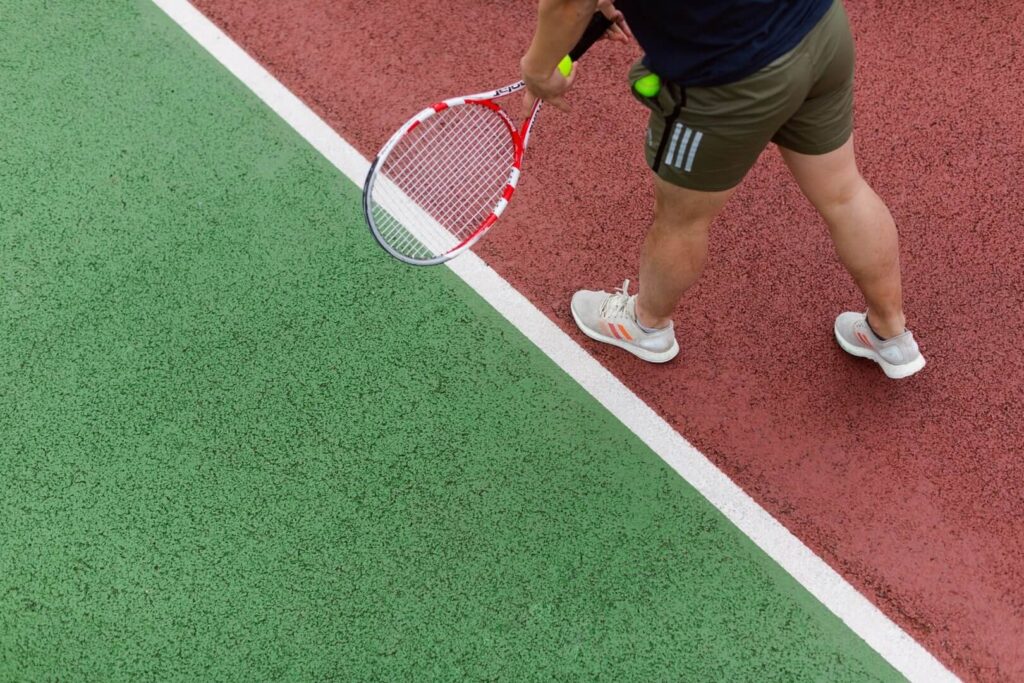
It would help modify your footwork when the court is wet to maintain stability. Improve your balance by taking smaller, more controlled steps to lessen the chance of slipping and shifting your body weight slightly forward to help you stabilize yourself and avoid falls.
Wear shoes with a good grip.
Tennis shoes made expressly for wet conditions can make all the difference. These shoes frequently have improved traction and grip, giving you more stability on the court. Look for footwear with non-slip soles or models designed with wet areas in mind.
Stay focused
If the courts are too wet, they can be unplayable, and there will be an increased injury risk. Maintaining concentration is essential for preventing injuries. Keep an eye on your steps, focus on how you’re moving, and focus on the game. Remember that a brief moment of inattention could cause you to slip or fall.
I’ll include a YouTube video here so you can better comprehend the topic.
Use caution with shots
The ball’s bounce may be less predictable under rainy conditions. Be ready for slower and lower bounces, which can necessitate modifying your swing and shot choice. Take your time, aim for controlled shots, and consider how the wet surface will alter the ball’s trajectory.
Keep warm
Tennis in cold and wet weather can make it more difficult for your muscles to stay warm and supple. It’s important to dress appropriately if you want to keep your body temperature stable. Choose quick-drying and moisture-wicking fabrics to stay dry and comfortable.
Layer up with a thin jacket or waterproof shell to shield yourself from the wind and rain. Consider wearing a hat or headband to keep your head warm and stop water from pouring into your eyes.
Stay hydrated
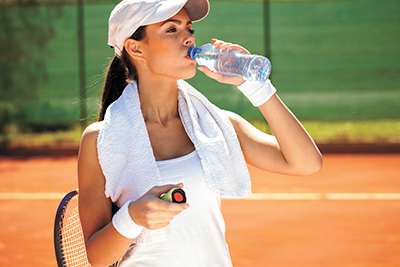
Stay hydrated and drink water even when it’s raining. Your body needs water even if you don’t feel particularly thirsty when you’re playing tennis. Therefore, hydrate yourself with water before, during, and after your game.
Carrying a water bottle and sipping from it frequently is a bright idea. This aids in replenishing the fluids you lose through sweat. Therefore, remember to stay hydrated, especially on rainy days!
On Quora, many users have shared their thoughts and experiences regarding tennis wet courts. Check it out if you need more clarity.
Tips for playing tennis on a wet court
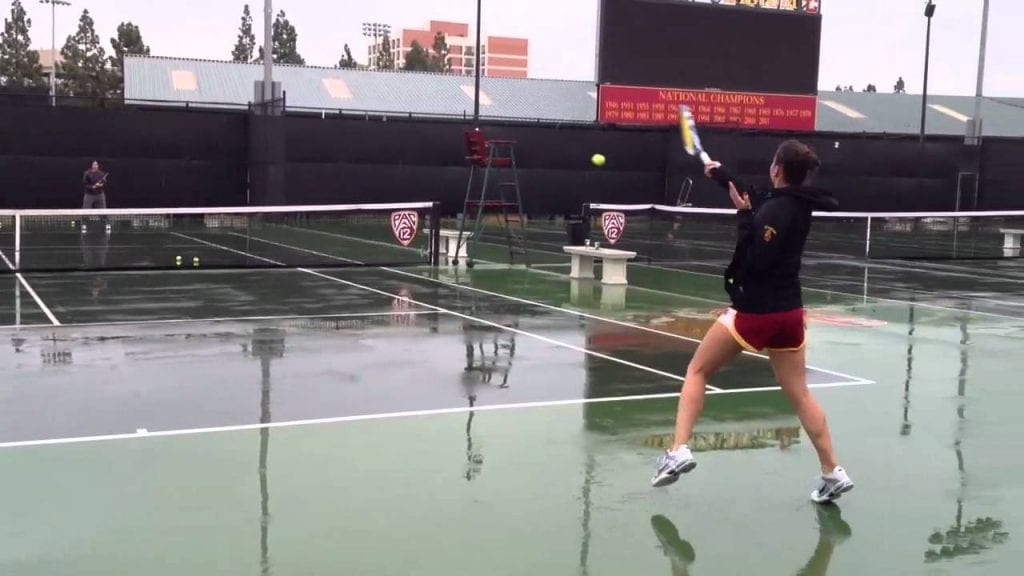
If you wonder about this query, Does playing tennis in the rain affect the gameplay? So obviously, it affects you. Generally, you can play tennis in the rain, but it is important to assess the conditions and ensure the court is safe for play.
Here I am sharing some tips and tricks for playing tennis on a wet court to help you deal with the rainy surroundings and have a better time:
Make your opponent move
It may be more difficult for your adversary to stay balanced and respond swiftly in wet conditions. Utilize this by launching shots that push the opposition to move around the court.
Stretch them wide and force them to correct their balance with deep, angled strikes. By employing this tactic, you can make your opponent more likely to make mistakes and gain the advantage.
Avoid kick serves
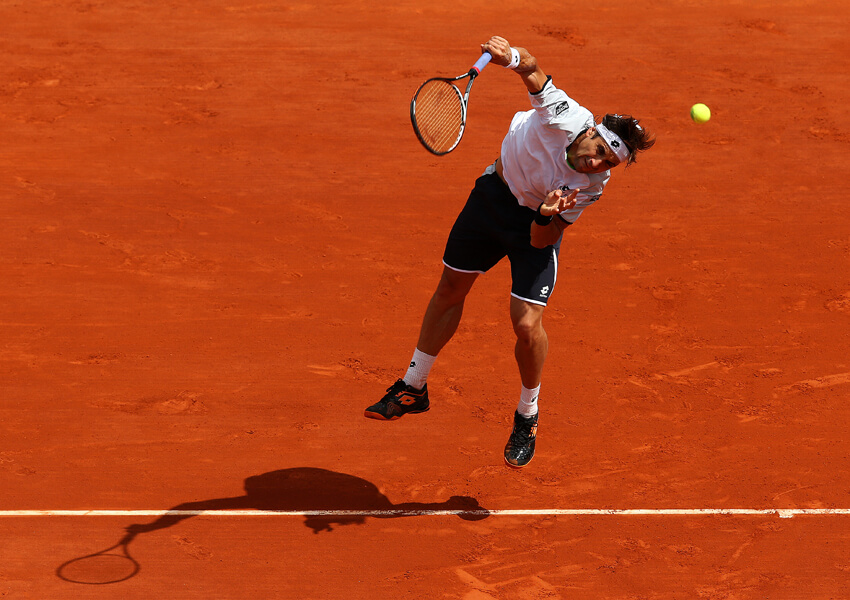
Kick can be effective on dry courts, but on wet courts, they can become unpredictable and difficult to perform. A kick serve’s additional spin can make the ball bounce higher and more unpredictably, making it challenging to control. Focus on flat or slice serves instead since they have a lower trajectory and are simpler to manage in a puddle.
Bend your knees more
On a wet court, keeping a steady and balanced posture is essential. Increase your knee flexion to increase your stability. You will have more control because of the lower center of gravity, which will also assist you in avoiding slipping or falling.
If you keep your knees flexible, you can more easily modify your position and react to the erratic bounces on a wet surface.
Adapt your shots
The bounce and pace of the ball can be affected by wet courts. Adapt your shots to slower bounces by being ready for them. Aim for smooth swings with little spin rather than too forceful or aggressive ones that can cause you to lose control.
Stay close to the baseline
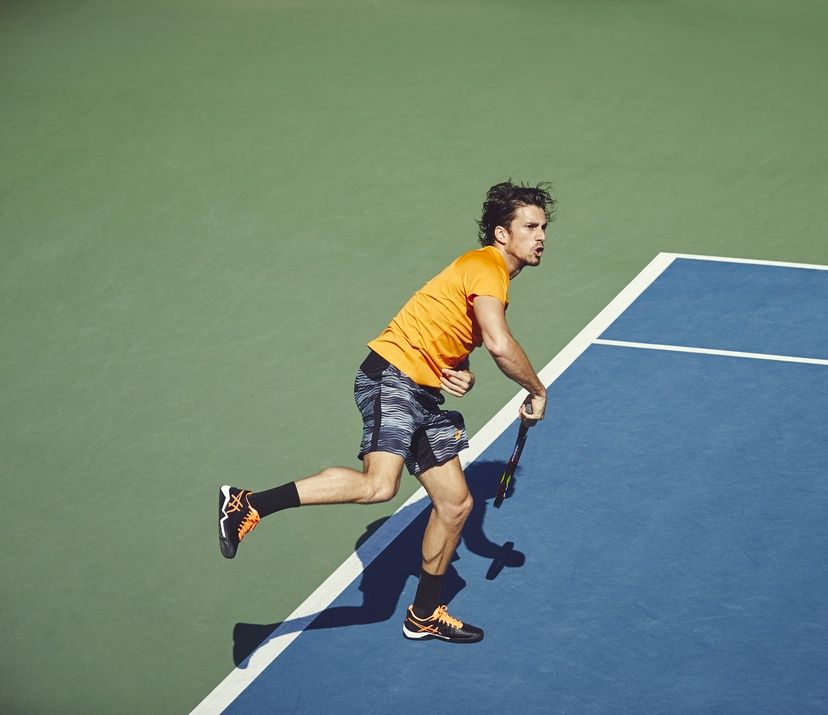
On a wet court, playing closer to the baseline may be advantageous. You give yourself more time to react to the ball and alter your shots by placing yourself closer to the baseline. This may compensate for the wet surface’s diminished speed and bounce.
Keep a towel handy
Keep a towel handy to remove extra moisture from the court and your equipment. To achieve greater control and avoid slipping while you swing, keeping your hands dry on your racket is imperative. Before serving or receiving, use the towel to dry up any wetness that may have gotten on the court surface.
Be mindful of safety
Always put your safety first. Before starting a game, inspect the court’s condition and avoid spots with evident risks like standing water. Consider postponing your game until the surface dries if the court is too slick or wet.
How Long Does It Take For Hard Tennis Courts To Dry?
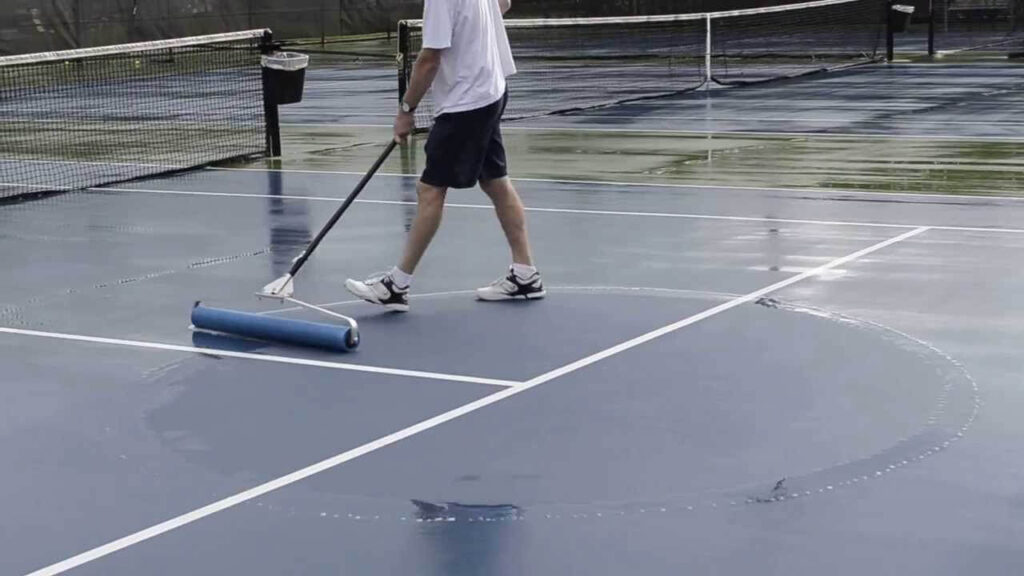
Hard tennis courts can dry more quickly or more slowly depending on the weather, court surface, and drainage system, among other things.
- A hard tennis court might take anywhere from a few hours to a day to dry.
- Direct sunlight and warm temperatures can hasten drying, whereas cloudy or cool weather may cause it to take longer.
- By successfully removing extra water from the surface, courts with good drainage systems can promote faster drying.
- The porosity and composition of the court can also affect how quickly things dry. Acrylic surfaces on some hard courts tend to dry out more rapidly than others.
- Additionally, the court area’s humidity and air circulation might affect how quickly things dry.
If you have more questions about how to dry the wet court process, I have provided a YouTube video here for your convenience to gather information quickly.
Do you still have any more questions? If you’re looking for this topic, don’t worry; I’ve covered several other queries that are related to it.
FAQs
1. Can I play tennis on a wet clay court?
Yes, but use caution because clay courts get very slick when damp. As the likelihood of slipping increases, adjust your motions.
2. Should I wear different shoes when playing on a wet court?
Use tennis shoes specifically made for wet areas or shoes with improved traction. These may offer improved traction and aid in avoiding falls.
3. How can I improve my footing on a wet tennis court?
You can enhance your footing on a wet court by taking smaller steps, shifting your weight slightly forward, and employing suitable footwork methods.
4. Is there a risk of damaging the court by playing on it when wet?
Yes! If the water is not quickly removed, playing on a wet court could lead to harm. To avoid long-term problems, it is crucial to maintain and care for the court appropriately.
5. Can I use a hairdryer to dry a wet tennis court?
It is not practicable to dry a tennis court using a hairdryer. It is best to utilize the proper court maintenance tools, such as squeegees or towels, for efficient water removal.
6. Does playing tennis on a wet court affect your performance?
As a result, even if you have adequate traction on a wet court, the moisture from the tennis balls will negatively impact your game. This is a significant factor in the difficulty of playing tennis in the rain. The only options are waiting for the courts to dry out or using fresh tennis balls.
Conclusion
Even while playing tennis on a wet court can bring particular difficulties, it is still possible to have fun with the proper preparations and modifications. Risks can be reduced, and the game can be made more manageable by evaluating the court’s safety and condition, considering unique characteristics, and applying specialized strategies. Even when the court is wet, prioritize safety and pay attention to the environment to provide a fun and safe game.

